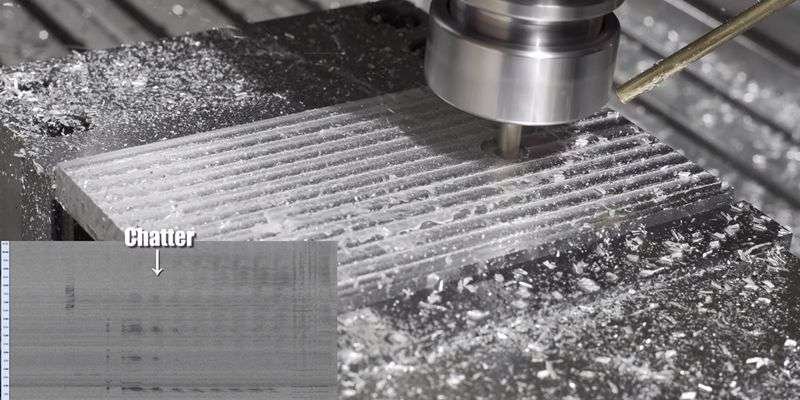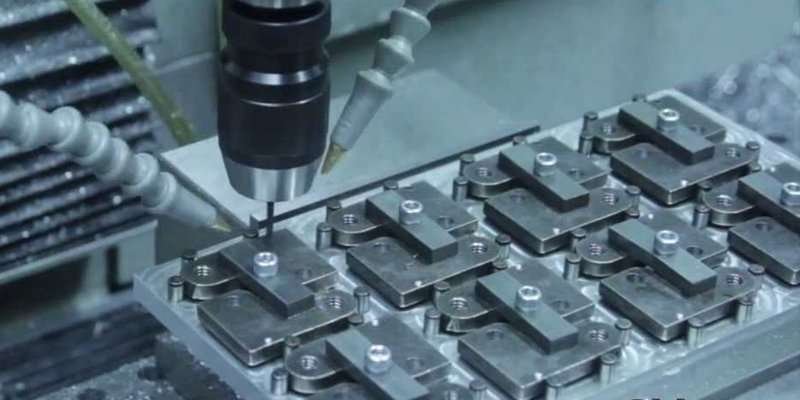Today, manufacturers widely use aluminum for various parts production because it is affordable, non-toxic, recyclable, and machineable. CNC machined aluminum parts meet strength and weight requirements and are highly valuable for their aesthetic qualities in the consumer electronics and automobile sectors.
However, to fully utilize aluminum for CNC machining, one must comprehend the CNC machining of this metal. This article provides insight into aluminum CNC machining, its machining process, and the right aluminum alloy for manufacturing.
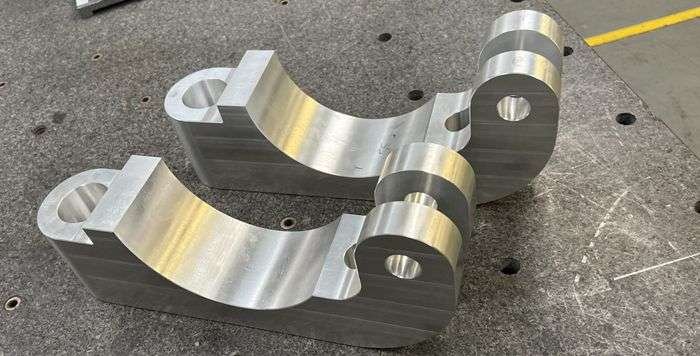
Table of Contents
ToggleRole of CNC Plays in Aluminum Machining
Aluminum is one of the most often used materials for CNC machining. It greatly improves productivity, accuracy, and diversity in industrial operations. CNC (Computer Numerical Control) technology is essential to this process. With the aid of CNC technology, machine tools may be instructed using computer-aided designs (CAD) that have been transformed into numerical control codes, speeding up production without sacrificing accuracy.
CNC makes it possible to create complicated geometric designs that would be challenging to accomplish manually by controlling speed, position, synchronization, feed rate, and other crucial machining parameters. Due to its versatility, CNC is widely used to manufacture aluminum.
In addition, the precision of CNC machining produces parts with intricate details and fine edges. In aluminum machining, CNC thus continues to play a critical role in improving the effectiveness, productivity, and quality of the finished goods.
Why Choose Aluminum for CNC Machining?
There are several benefits to choosing aluminum for machined parts.
High Strength and Lightweight
Aluminum is a malleable, lightweight metal, making it easier to change into many forms. This physical characteristic is appropriate for producing CNC machining components. Aluminum is desirable for producing vital parts in various industries, including the aerospace and automotive sectors, due to its lightweight and high strength.
To be more specific, among the several grades of aluminum, 6061 is a general-use grade. The strength-to-weight ratio of this model is high.
Good Electrical and Thermal Conductivity
Aluminum Is used to construct parts like automobile heat exchangers as it is a good heat and electricity conductor. It transfers heat three times as well as steel. Besides, aluminum transmits around 37.7 million Siemens per meter at 25℃.
Machined aluminum parts are also fantastic electrical conductors, which makes them perfect for making electrical parts.
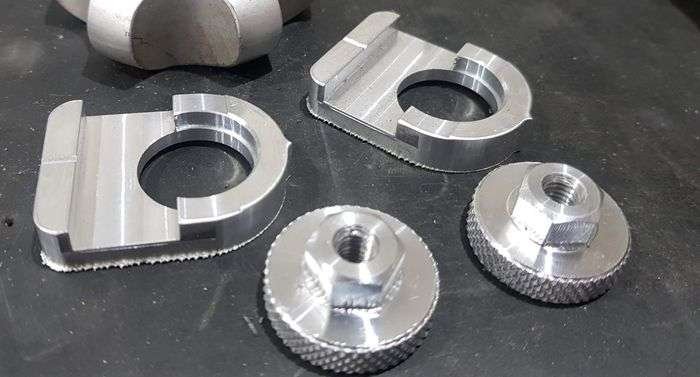
Environmentally Friendly and High Recyclability
The metal aluminum is malleable and soft. It has an exterior look of silvery gray and is easily obtainable. Aluminum is one of the most common preferable choices for CNC machining because of its favorable environmental characteristics. Moreover, it is quite recyclable. Nowadays, eliminating material waste and reducing the impact on the environment are top priorities for all industries.
Excellent Corrosion Resistance
Aluminum is a unique material for metal CNC machining because of its exceptional corrosion resistance. The reason is that aluminum can form aluminum oxide on its thin outer surface. It creates this layer when air directly touches the metal surface and reacts.
Among the aluminum grades, 7075 offers greater protection against corrosive environments and is one of the best grades that resist corrosion.
Versatile Machining Capability
Machinability is the degree to which a given metal is machinable or cut to create various items. Aluminum is effortless to work with to manufacture a variety of parts. An acceptable surface polish is easily obtainable when using a more machinable metal.
Wide Range of Customization Options
A broad spectrum of styles can be readily made out of aluminum. It is customized to various shapes, including sheets, extruded profiles, and flat panels. Aluminum CNC parts can also work great with different finishes, colors, and textures according to design specifications.
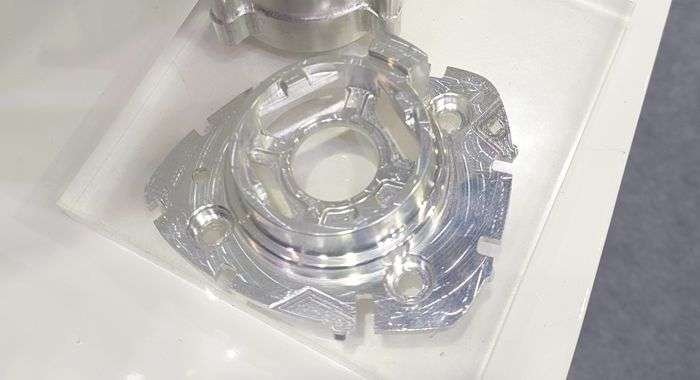
Challenges of CNC Machined Aluminum
There are challenges often experienced when CNC machining aluminum parts.
Surface Scratches and Blemish
The texture of aluminum is rather soft, making it prone to surface scratches. Compared to other sturdy materials, it scratches more readily. Furthermore, aluminum is more vulnerable to surface dents and scratches due to its glossy appearance.
Relatively Low Melting Point
Another challenge experienced by machined aluminum parts is the low melting point. Aluminum on its own melts at a lower temperature of around 660 degrees Celsius due to its chemical makeup. Although in its alloy form, this melting point increases considerably, it is still lower than that of most metals.
Pure Aluminum with a Lower Hardness
Aluminum has a very smooth texture when it is pure, and using aluminum in this form has a significant disadvantage. In its pure form, aluminum is a soft metal, so manufacturers use aluminum alloys for production instead.
Types of Aluminum Alloys for CNC Machining
Aluminum alloys come in a wide variety and are frequently utilized in CNC machining. Here are the common aluminum alloys for CNC machining.
- 6061 Aluminum: This alloy is most commonly utilized and adaptable. It has good machinability, formability, and weldability. It is frequently utilized for frames and structural parts.
- 7075 Aluminum: 7075 alloy is renowned for having exceptional fatigue resistance and high strength. It is frequently utilized in automotive and aeronautical applications.
- 6063 Aluminum: Ext+rusions and architectural applications frequently employ this alloy. It is simple to polish and has high surface finish characteristics.
- 2024 Aluminum: 2024 aluminum is mainly utilized in aerospace applications because of its excellent machinability and high strength-to-weight ratio.
- 5083 Aluminum: This type is frequently used in marine applications and is renowned for its outstanding corrosion resistance.
- 5052 Aluminum: This alloy is widely used for sheet metal fabrication and parts for automobiles and appliances, and it has good workability.
It’s crucial to remember that choosing a material to get machined aluminum parts requires careful consideration of CNC machining cost, strength, weight, and resistance to corrosion. Please contact XinCheng if you have any specific questions.
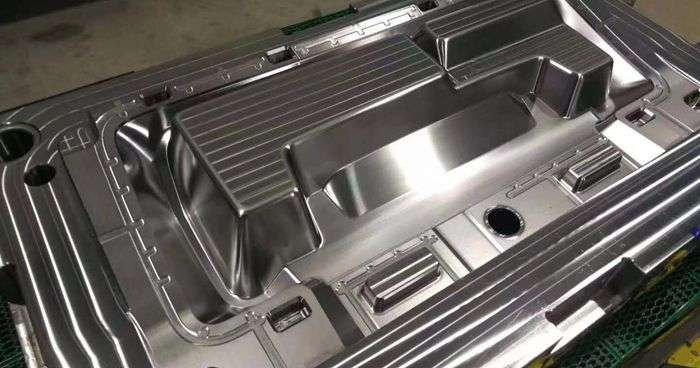
Design Considerations for Aluminum Parts Using CNC Machining
There are several crucial factors to consider when designing parts for aluminum CNC parts to guarantee effective and successful manufacturing. Key design guide considerations for CNC machining process optimization are as follows.
Machining Tolerance
Achieving precise and reliable machined aluminum parts requires designing within acceptable production tolerances. Tolerances guarantee that the parts produced are functional and fit together correctly by defining the acceptable deviation from the given dimensions.
Working closely with your CNC machining company can help you understand their capabilities and tolerances for certain parts.
Pockets and Cavities
Tool diameter, material removal, and tool access are factors to consider while designing pockets and cavities in CNC aluminum machined parts. Steer clear of tight corners since these can be challenging to machine precisely.
Holes, Threads, and Undercuts
It is important to consider the alignment, size, and depth of holes and threads when designing aluminum CNC parts. Standard thread diameters should be used for internal threads to simplify tooling and minimize complexity.
Undercuts should be limited or avoided as they can complicate machining because they involve elements that cut tools cannot directly access.
Thin Walls and Structures
Aluminum design parts with thin walls and structures can be difficult to mill precisely. When machining thin walls, consider the machining forces and rigidity of the material. Use supports or ribs to strengthen them to increase stability and reduce distortion.
Internal Edges and Radii
Part strength, aesthetic appeal, and ease of production are all influenced by internal edges and radii. Sharp interior corners may cause machining challenges and stress concentrations. Internal edge radii or filets increase part durability and machining efficiency, so ensure to consider that.
Different Aluminum CNC Machining Processes
Aluminum CNC machining is the umbrella term for various techniques used to shape and produce aluminum products precisely.
Let’s check some essential production processes for aluminum CNC parts.
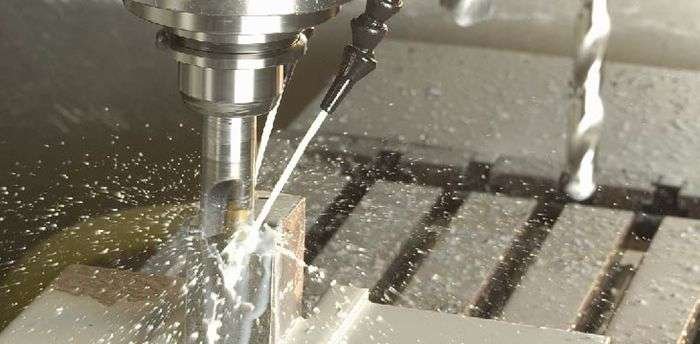
3, 4, 5 Axis (Multi-Axis) CNC Milling Aluminum
Multi-axis milling machine aluminum material in several axes simultaneously to make complex forms and curves. When CNC cutting aluminum, multi-axis machines may perform intricate tasks with just one setup, reducing the time to move the workpiece.
3, 4, and 5-axis machining are common multi-axis configurations and offer the most freedom for producing intricate geometries and features.
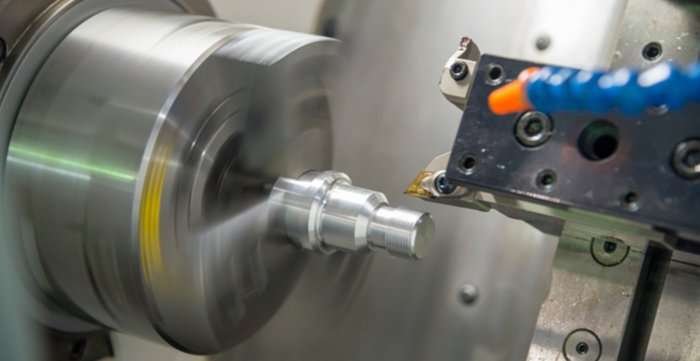
CNC Turning Aluminum
Turning creates cylindrical shapes by turning the workpiece and removing material using a cutting tool. In aluminum machining, CNC turning creates cylindrical features such as threads, concentric surfaces, and shafts. It works especially well for creating symmetrical or spherical components.
CNC Drilling Aluminum
When making aluminum CNC parts, CNC drilling is a common method. During the procedure, holes are made in the aluminum material using a computer-controlled drill. HSS drill bits are the most commonly used drill when working with aluminum.
When CNC drilling aluminum, several factors are considered, including cutting edge angle, drill speeds and feeds, drill geometry and substrate, coolant application, and tool coating.
How to Machine CNC Aluminum Parts?
Machining aluminum results in the production of parts that are of high quality, with accuracy and tight tolerances. There are steps involved in CNC machining aluminum.
1. CAD Model Preparation
This entails using CAD software to model the product in two or three dimensions. Although some parts ideas may be straightforward, creating some in CAD models—particularly for intricate product designs—may call for advanced skills.
For a successful machining operation, the CAD model needs to be well-designed and easily display important elements like tolerance, construction lines, threads, and other details to the operator.
2. Converting CAD Model to CAM
The CAD model is not understandable by CNC machines. Consequently, for the machine to understand the CAD model, you must convert it to a CNC-compatible format using CAM software.
This software instructs the CNC machine on parameters and can convert to a format compatible with a CNC. CAM includes aspects of the machining process such as rotation and linear movement, cutting order, toolpath, workpiece, machine speed, etc.
3. Setup Execution
This entails selecting the appropriate CNC machine type and setting up specific functions before the start of the machining process. The workpiece, the cost, and the intricacy of the product design all play a role in choosing the appropriate machine. The workpiece is then installed on the machine.
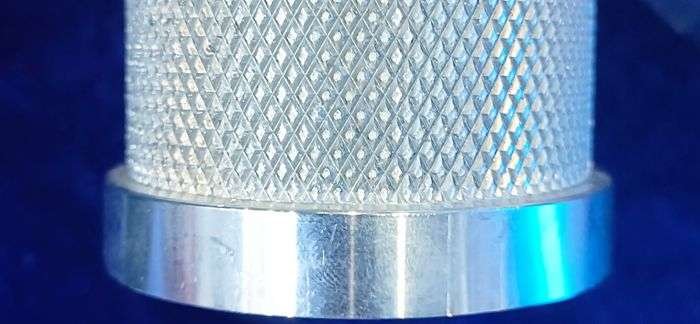
4. Machine the Aluminum Part
The operation will begin when the operator attaches the required cutting tools. The CNC machine is then programmed to create the high-quality aluminum part. Machinists perform multiple inspection levels during and after machining to ensure quality.
Cutting Tools Required for CNC Machining Aluminum
There are different tools and equipment used in the CNC machining of aluminum drills due to the intricacy of the process. These tools include:
Drills
Drills are a productive tool for creating holes. When it comes to machining aluminum, selecting the right drill bit is crucial for efficient and precise work. As easy as that. The major drill types used in alumining CNC machining include Standard high-strength steel, Carbide, and Cobalt drills.
¼ Inch Chamfer
With sharp corners, this tool produces exterior chamfers. Countersinks on aluminum are machinable with this tool. The most frequent angles for chamfer mills are 30, 45, and 60 degrees. Knowing this will help you design your aluminum CNC parts more effectively because your part design should be in one of these typical angles.
⅜, and ¼ Inch End Mills
One of the most used CNC cutting aluminum tools is the end mill. They are quite adaptable since they are available in various shapes, diameters, flute counts, materials, and coatings.
Having ⅜” and ¼”end mills will give you a good start when discussing aluminum. Smaller cutters enable you to add more detail, particularly on ID work, while larger cutters enable you to remove more material quickly.
Importance of Precision and Accuracy in CNC Aluminum Machining
Precision and accuracy are two essential ideas that are crucial in deciding the ultimate product’s dependability and quality. Accuracy is the degree to which the measured or machined parts are as close as possible to the true or target value. In contrast, precision is the degree to which a measurement or result is continuously reproducible.
When it comes to machining aluminum, accuracy and precision are crucial. The accuracy and precision of CNC machining aluminum are its main advantages.
CNC machines are computer-controlled and capable of producing exact parts with close tolerances, in contrast to traditional production methods. They are, therefore, perfect for crafting intricately detailed objects and complex shapes.
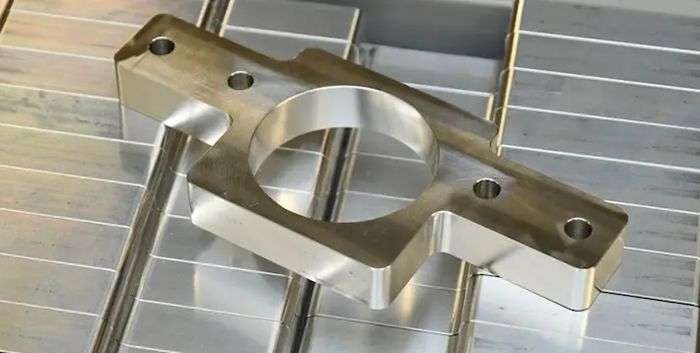
Surface Finishing for Aluminum Machined Parts
Metal components and parts produced by CNC machining require post-processing to look good. As a result, producers of machined or milled aluminum must select a surface finish that enhances the appearance of the finished product.
Anodizing
Anodizing aluminum is a popular surface finish technique. This electrochemical procedure adds another layer of protection to the naturally occurring oxide film found on aluminum alloys like 7075 and 6061. This additional layer is great for insulation, ornamentation, abrasion resistance, and protection.
Powder Coating
Powder coating is a typical procedure for manufactured aluminum parts. Paint is used in this procedure without the need for a solvent.
A spray gun is used to apply the mixture to the metal, leaving a smooth finish. Although it is more durable than paint, the matte or glossy coating provides a decorative effect.
Polishing
Like other metals, aluminum can be mechanically treatable by blasting, buffing, or polishing. These procedures use abrasion to smooth out the surface, remove extra metal, and prepare it for additional cosmetic treatments.
Factors to Consider When Selecting an Aluminum CNC Service Provider
When choosing an Aluminum CNC service provider, there are several factors to consider, these factors include;
CNC Technology Capabilities
You must research the technology a CNC machining service provider offers before selecting them for your project. Different types of CNC machines are available, including 3, 4, 5-axis and multi-axis machines. The number of CNC machines a CNC machining service provider has will go a long way in determining turnaround time and the quality of your aluminum part project.
Company Experience
Finding an experienced company is the first step towards selecting the aluminum cnc machining services. It is important to note that, companied with extensive industrial experience – developed over time – are competent and reliable.
A seasoned manufacturing company knows how to run production lines and has a solid reputation for providing high-quality products and satisfying customers. Additionally, search for a manufacturing service or business that can handle large-scale machining in addition to prototyping.
Verify and Check the Certifications
While this guidance is more important for some applications than others, it helps determine how well-established a precision machining facility is.
The production partner should have top-notch facilities and certifications if you are ordering medical equipment or components. In addition to these specific requirements, there are additional certifications to search for, including supplier documentation, environmental certificates, and quality assurance certifications.
Choose XinCheng for CNC Machining Aluminum Parts
Are you looking for a CNC aluminum service provider with experiences and professional?
At XinCheng we have a wide range of aluminum CNC machines including 3, 4, and 5-axis machines on standby to process your order, thus guaranteeing a fast lead time. Our production capabilities ranges from making aluminum prototypes to small- and large-scale production. We also have a team of engineers and machinists ready to process your order and offer professional DfM feedback. Just upload your CAD files and get a free quote today!
Conclusion
CNC machining is a commonly used technology in the manufacturing of aluminum parts. Aluminum’s qualities and attributes have been further enhanced by alloys, which makes it easily machinable with CNC machining.
However, to fully utilize aluminum in CNC machining, there are important things to know and consider to make your aluminum part project comes out successfully.
FAQs
What other metals can CNC machining process besides aluminum?
CNC machining can process many metals, including stainless steel, copper, brass,, carbon steel, titanium, etc. It is a versatile process that not only processes metals but also plastics and composites
Where can I find CNC Aluminum services?
You can find a reliable CNC aluminum services in China with Xincheng standing as one of the most reputable CNC manufacturers that can provide you instant quote with guaranteed fast lead time.
Is CNC aluminum part strong?
Aluminum alloy is durable and lightweight and when used in CNC machining, they are strong. They are also corrosion-resistant and can withstand harsh environments.
What is the best aluminum alloy for CNC machining?
Usually, the 6061-T6 is the standard aluminum grade for CNC machining. This is due to its versatility and high machinability. Also, this alloy has various heat treatments, making it ideal for different machining processes.

